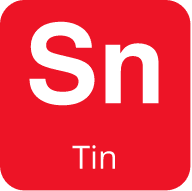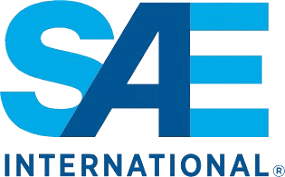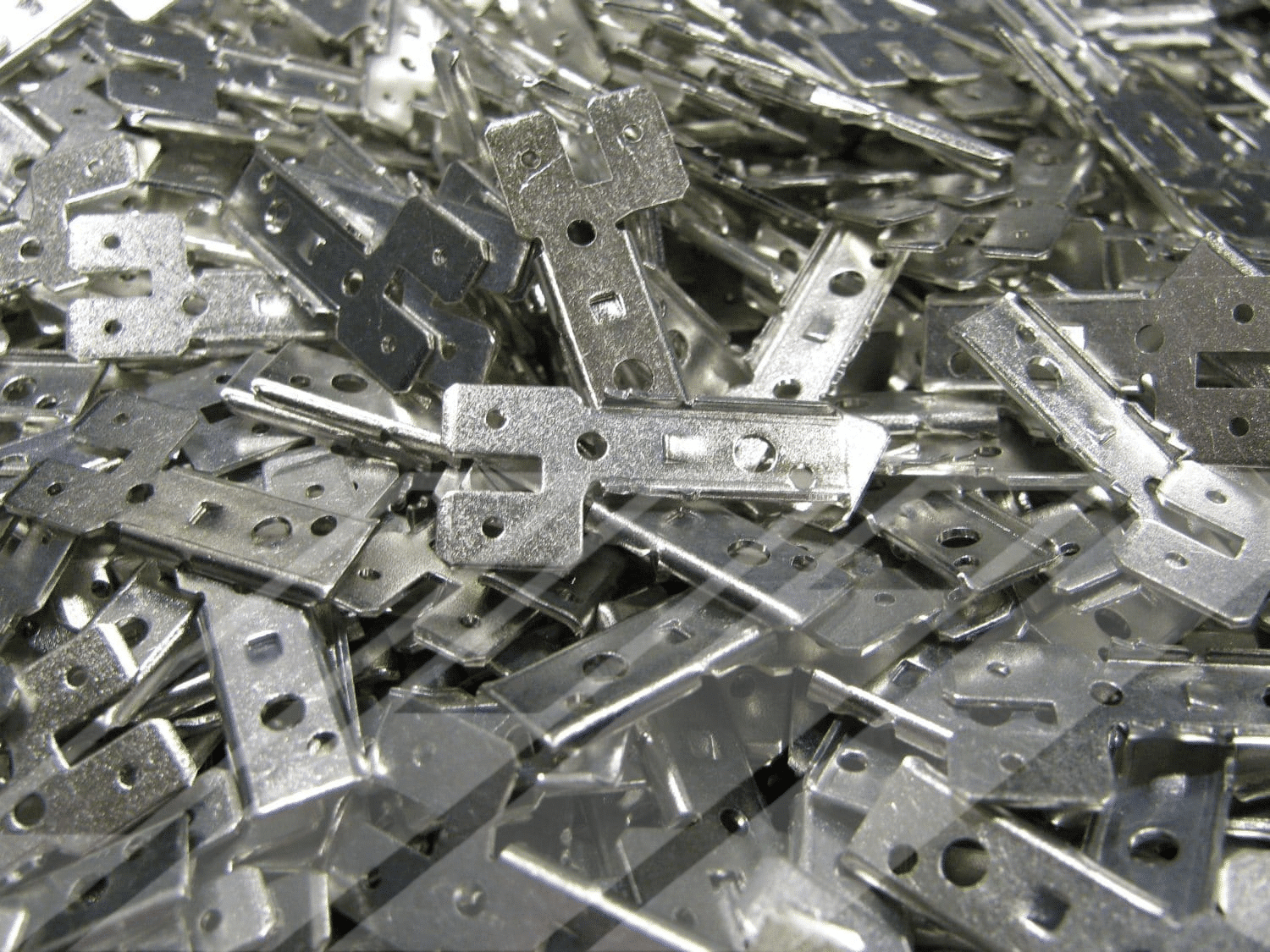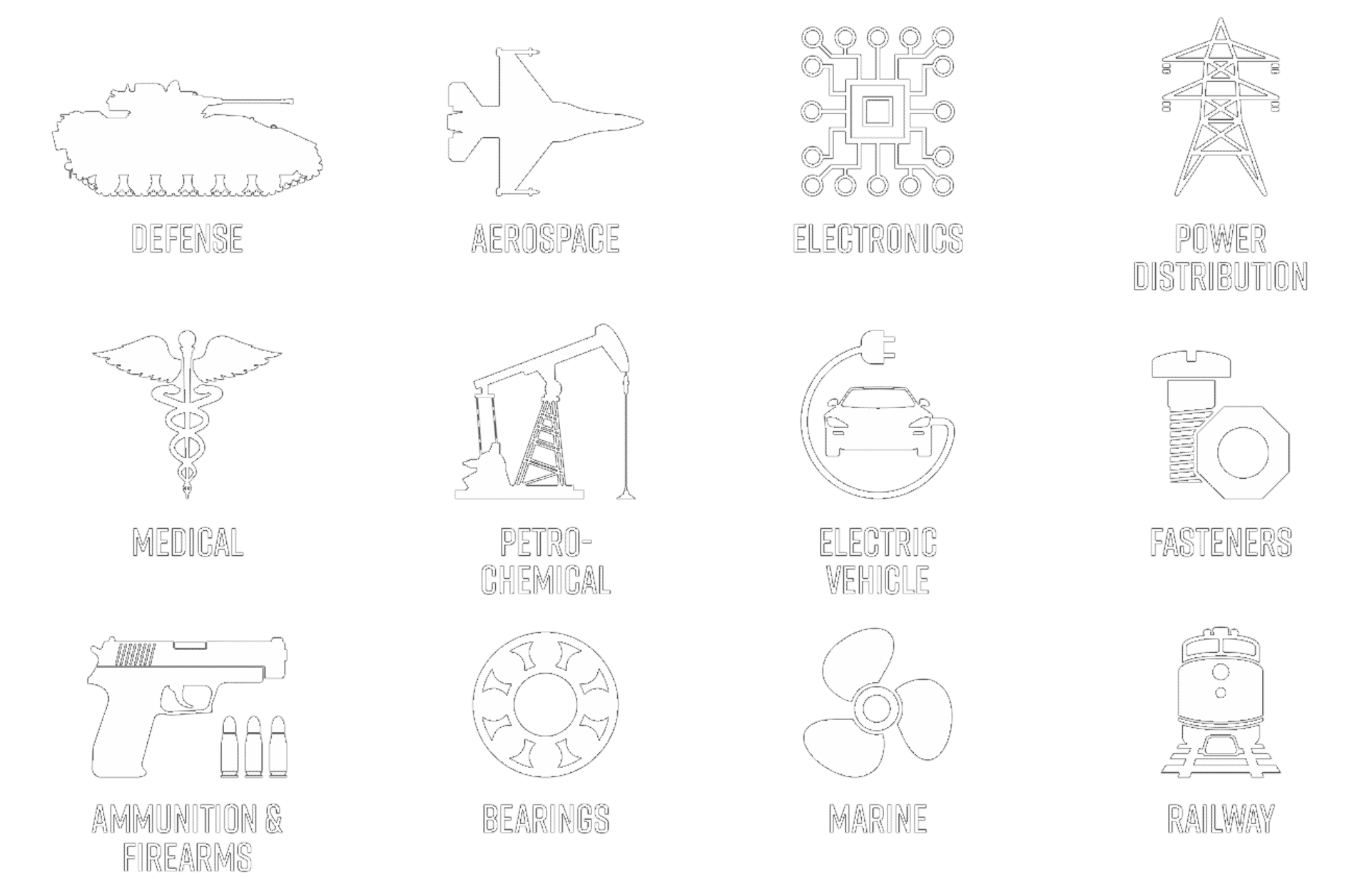
TIN PLATING SERVICES (COMPANY) PER MIL-T-10727, ASTM B545 & AMS 2408
Advanced Plating Technologies (APT), a Milwaukee, Wisconsin company, offers engineered bright and matte (solderable) tin plating services to MIL-T-10727, ASTM B545 and AMS 2408. Since 1948, APT has provided expertise in precision barrel, rack and vibratory bright and matte tin plating services is currently employed in numerous industries including the power transmission/distribution, electronic, telecommunication, medical, marine and aerospace industries.
Advanced Plating Technologies provides various underplates to tin electrodeposits including copper plating or nickel plating to enhance solderability and improve durability of the tin deposit in high temperature applications (reference: How do I make a solderable deposit or What type of tin plating should I use for my application in our Plating Topics section). A nickel or copper underplate prior to tin plating will minimize migration of alloying metals such as zinc from the substrate into the tin deposit in applications such as switchgear, terminal spades or fuse caps. For critical defense or aerospace applications, codeposited lead – commonly referred to as solder deposits – can be provided to enhance wetting during soldering and minimize the potential for whisker growth.
Tin Plating Services – Matte vs Bright Tin Plating
Tin plating can be broken up into two primary categories: Bright tin and matte (solderable) tin. Both deposits are electrolytically applied. Bright tin plating has a high degree of luster and is commonly preferred for electrical contact applications such as bus bars, terminals and switching components that are not soldered. If bright tin plating is soldered, the codeposited organics in the deposit can burn, resulting in a dewetting of the solder and a visible charring of the solder joint.
For solderable applications matte (solderable) tin plating services are recommended, as the deposit is free of the codeposited brighteners found in bright tin plating. For substrates alloyed with zinc (such as brass alloys) it is generally recommended to apply a diffusion barrier of nickel plating or copper plating to prevent zinc migration into the tin deposit and resultant intermetallic formation. Artistic recommends the use of an unbrightened nickel deposit such as sulfamate nickel as a diffusion barrier as it affords an excellent solder base for soldering applications.
It is important to note that solderability of tin plated products is a perishable attribute that has a finite life. APT engineers can collaborate with your company to help extend the soldering life of products by properly specifying the deposit, preparing the substrate and properly packaging the plated components.

ISO 13485:2016

ITAR Compliant

ISO 9001:2015

Federal Firearms License

ISO 13485:2016

ITAR Compliant

ISO 9001:2015

Federal Firearms License
SELECT ONE TO LEARN MORE
What Type of Tin?
Tin Plating of Copper Busbars
Solderable Deposit
Bright Tin & Solderability


|
Tin |
STANNUM |
| Atomic Number – Qty Protons: | 50 | Thermal Conductivity – W/(cm*K): | 0.67 |
| Atomic Weight – g/mole: | 118.7 | Electrical Resistivity – nOhm*m: | 115 |
| Density – g/cm3: | 7.26 | Hardness – Hb: | 51 Hb |
| Melting Point – C°: | 232 | Specific Heat Capacity – J/(g*K): | 0.23 |
Tin is a soft, ductile, silvery-white metal that is not easily oxidized in air. It has good conductivity and corrosion resistance while enhancing solderability of substrates that are not otherwise easily soldered to. Tin is typically considered non-toxic and non-carcinogenic and as such its use is generally approved for food contact applications. Tin’s use can be traced back to 3000 BC when it was first alloyed with copper to make bronze weapons, flatware and other functional products.
Tin is a post-transition metal and is the 49th most abundant element on earth with ten stable isotopes. Tin has two primary allotropes, 1) beta tin (β-tin) which is the silvery-white, ductile metal that most people associate with tin and 2) alpha tin (α-tin) which is a less dense grey and powdery metal that tin can transition to at very low temperatures (referred to as tin/pest). Tin deposits have a unique stress-relief mechanism of growing filiform whiskers from the surface that can cause short circuits in electronic applications. Whiskers can be mitigated by plating a tin alloy such as tin/lead, using matte deposits and annealing tin deposits. Reference Tin vs Nickel Plating in APT’s technical blogs for more information.


|
Tin |
STANNUM |
| Atomic Number – Qty Protons: | 50 | Thermal Conductivity – W/(cm*K): | 0.67 |
| Atomic Weight – g/mole: | 118.7 | Electrical Resistivity – nOhm*m: | 115 |
| Density – g/cm3: | 7.26 | Hardness – Hb: | 51 Hb |
| Melting Point – C°: | 232 | Specific Heat Capacity – J/(g*K): | 0.23 |

Tin
STANNUM

| Atomic Number – Qty Protons: | 50 |
| Thermal Conductivity – W/(cm*K): | 0.67 |
| Atomic Weight – g/mole: | 118.7 |
| Electrical Resistivity – nOhm*m: | 115 |
| Density – g/cm3: | 7.26 |
| Hardness – Hb: | 51 |
| Melting Point – C°: | 232 |
| Specific Heat Capacity – J/(g*K): | 0.23 |
Tin Plating Services – Tin Plating Properties
Tin is a soft, ductile, silvery-white metal that is not easily oxidized in air. It has good conductivity and corrosion resistance while enhancing solderability of substrates that are not otherwise easily soldered to. Tin is generally considered non-toxic and non-carcinogenic and as such its use is generally approved for food contact applications. Tin’s use can be traced back to 3000 BC when it was first alloyed with copper to make bronze weapons and products.
Tin plating services can be broken up into two primary categories: Bright tin and matte (solderable) tin. Both deposits are electrolytically applied. Bright tin plating has a high degree of luster and is generally preferred for electrical contact applications such as bus bars, terminals and switching components that are not soldered to. If bright tin plating is soldered, the codeposited organics in the deposit can burn, resulting in a dewetting of the solder and a visible charring of the solder joint.
For solderable applications matte (solderable) tin plating services are recommended, as the deposit is free of the codeposited brighteners found in bright tin plating. For substrates alloyed with zinc (such as brass alloys) it is generally recommended to apply a diffusion barrier of nickel plating or copper plating to prevent zinc migration into the tin deposit and resultant intermetallic formation. Artistic recommends the use of an unbrightened nickel deposit such as sulfamate nickel as a diffusion barrier as it affords an excellent solder base for soldering applications.
Tin Plating Services – Advanced Plating Technologies’ Capabilities
Specifications
MIL-T-10727
ASTM B545
AMS 2408
Most Company Specifications
Finish Type
Bright
Matte (Solderable)
Part Size Limitations
40 Inches x 45 Inches x 20 Inches
Substrates Plated On
Ferrous: All Ferrous Alloys Including Mild Steel, Stainless Steels, Hardened Steels & Tool Steels
Cuprous: All Cuprous Alloys Including Pure Copper, Copper Alloys Including Tellurium & Beryllium, Brass, Nickel-Silver
Aluminum: All Aluminum Alloys Including Wrought, Cast and Proprietary Alloys (MIC-6)
Exotics: Inconel, Pure Nickel (Nickel 200), Cobalt-Chrome (MP35N), Kovar, Monel, Hastalloy, Monel, Lead
Underplates Provided
Copper
Electrolytic Nickel
Electroless Nickel
Tin or Tin/Lead
Heat Treatments
Hydrogen Embrittlement Bakes
Stress Relieving Bakes
Methods
Barrel
Rack
Wire
Vibratory
Selective Loose Piece Plating
Sheet Product (Chemically Milled/Etched Sheets)
Segmented Strips (Frets)
CONTACT BY EMAIL NOW
Tin Plating Specifications
The two most common tin plating services certified by Advanced Plating Technologies are MIL-T-10727, ASTM B545 and AMS 2408. Our company can also certify tin plating services to ISO 2093 as well as most company-specific tin plating specifications. A summary of tin plating services per the MIL, ASTM and AMS specs is as follows:

Tin Plating Services to ASTM B545
Class A – 0.0001 inch minimum, mild service conditions for applications where the significant surface is shielded from the atmosphere
Class B – 0.0002 inch minimum, mild service conditions with exposed significant surface
Class C – 0.00032 inch minimum (nonferrous), 0.0004 inch minimum (ferrous), moderate service conditions
Class D – 0.0006 inch minimum (nonferrous), 0.0008 inch minimum (ferrous), severe service conditions
Class E – 0.0012 inch minimum, very severe service conditions
Class F – 0.00006 inch minimum, service conditions similar to class A but for short term contact applications and short shelf-life requirements
4.3.1 – Section Defines Matte Tin Electrodeposits
4.3.2 – Section Defines Bright Tin Electrodeposits
4.3.3 – Section Defines Flow Brightened Electrodeposits
6.8 – Class A and F coatings that will not be exposed to solder temperatures should have a nickel underplate of at least 1.3um (50uin) before tin plating. To prevent zinc migration and impairment of solderability during service or storage, substrates of brass or other copper alloys containing more than 5% zinc must have a copper undercoating of at least 2.5um (100uin) or a nickel underplating of at least 1.3um (50uin) prior to tin plating. A thicker coating of nickel may be required in some situation for additional retardation (of zinc migration into the tin).

Tin Plating Services to AMS 2408
3.1.1 Steel parts having a hardness of 40 HRC or higher and which have been ground after heat treatment shall be cleaned to remove surface contamination and stress relieved before preparation for plating. Unless otherwise specified, the stress relief shall be 275F +/- 25F for not less than 5 hours for parts with hardness of 55 HRC or greater and 375F +/- 25F for not less than 4 hours for other parts.
3.2.1 Except as stated in 3.2.1.2 or 3.2.2 tin shall be electrodeposited directly on the basis metal from a suitable tin plating bath.
3.2.1.2 Aluminum and aluminum alloys shall be zinc treated in accordance with ASTM B253 or other method acceptable to the cognizant engineering organization prior to plating.
3.2.2 Prior to electrodeposition of tin for solderability on aluminum or copper-zinc alloy parts, a copper plate shall be deposited to a thickness of 0.0002 to 0.0003 inch (5.1 to 7.6um)
3.4.1.1. Plate thickness may be specified by this specification number and a suffix number designating the minimum thickness in ten-thousandths of an inch (2.5um); thus, AMS 2408-1 designates a plate thickness of 0.0001 to 0.0003 inch, AMS 2408-6 designates a thickness of 0.0006 to 0.0008 inch, etc. A tolerance of 0.0002 inch will be allowed.
3.4.1.2. Where “tin flash” is specified, plate thickness shall be approximately 0.0001 inch.


Tin Plating Services to MIL-T-10727
Type I – Electrodeposited (Recommends referencing ASTM B545 for electrodeposits of tin)
Type II – Hot Dipped (Advanced Plating Technologies does not offer hot dip services)
Intended Uses per Section 6.1 of MIL-T-10727
a. MIL-T-10727 cross references to ASTM B545 which outlines thicknesses for various service conditions in section 6, paragraph 6.1
b. 0.0001-0.00025 inch for tin flashing of articles to be soldered
c. 0.0002-0.0004 inch for articles to prevent galling or seizing
d. 0.0003 inch minimum for articles generally plated to prevent corrosion of basis metals
e. 0.0002-0.0006 inch for articles to prevent formation of case hardening during nitriding







